Welcome to This Date in Aviation History, getting of you caught up on milestones, important historical events and people in aviation from May 1 through May 3.
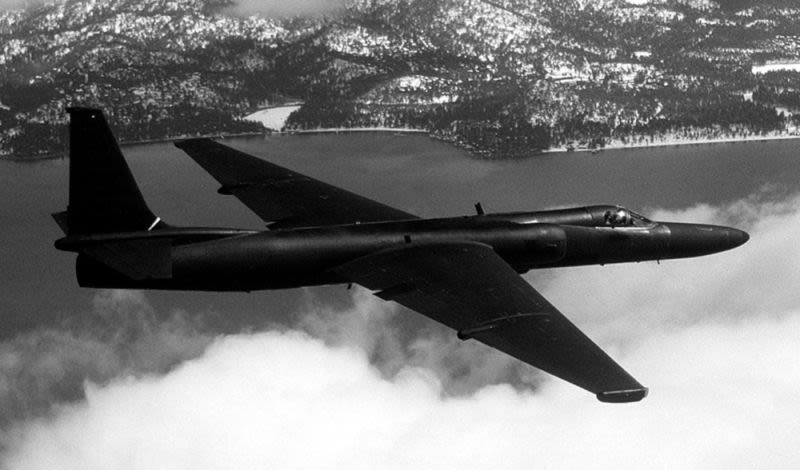
May 1, 1960 – Central Intelligence Agency pilot Francis Gary Powers is shot down over the Soviet Union. During the Cold War, the United States was desperate for timely, accurate intelligence on Russian military activities. Today, that sort of information is gained by powerful satellites, but space-based reconnaissance was in its infancy in the 1960s. Not only was it unreliable, it was also not at all timely, since film had to be ejected from the orbiting satellites and returned to Earth for pickup, usually snatched from the air as they descended by parachute. It was not a foolproof system, and many rolls of film were lost. Closer to the ground, American reconnaissance planes had been probing the edges of the Soviet Union, but it was hazardous duty, and many planes and pilots were lost to Russian fighters.
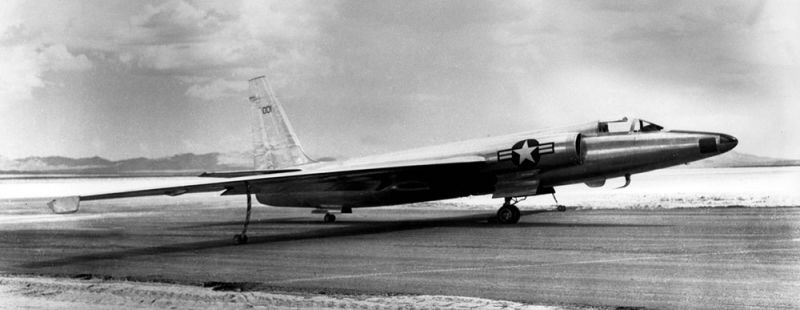
What the US sorely needed was an aircraft that could take reconnaissance photos of military installations, missile tests, or other high-value assets while flying high enough to be out of the reach of Soviet fighters, then return to have the images analyzed immediately. At the time, there was perhaps nobody better suited to tackle the job of creating such an aircraft than Kelly Johnson, head of Lockheed’s super-secret Skunk Works, and the result of his work was the Lockheed U-2. With the U-2, Johnson and his team of engineers produced an aircraft that was capable of flying at 70,000 feet and, though the “Dragon Lady” was by no means a fast aircraft, its extreme operating altitude made it immune to interception by enemy fighters. But as Soviet antiaircraft missile technology improved, the US knew it was just a matter of time before one of their pilots was shot down.
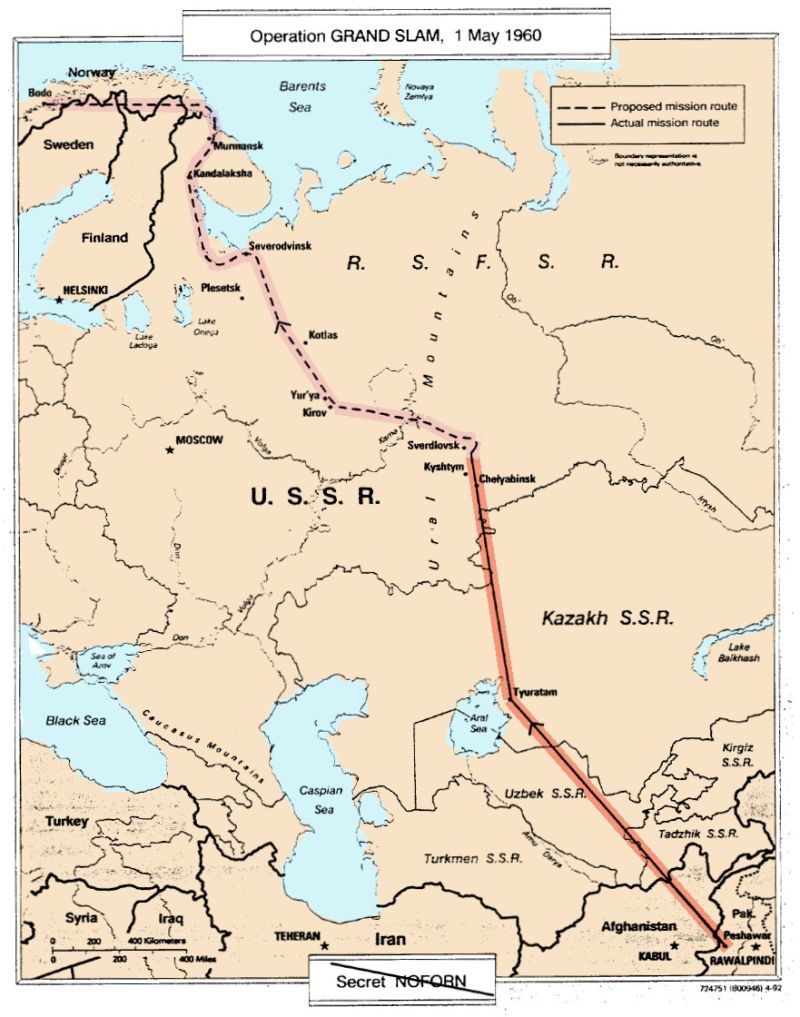
For three years, the U-2 flew undisturbed, but on May 1, 1960 CIA pilot Francis Gary Powers was shot down while on a spy mission over Russia. Powers had taken off from Pakistan and flown northward to photograph ICBM sites at the Baikonur Cosmodrome and the Plesetsk Cosmodrome. After photographing the sites, his flight plan dictated that he continue north and land in Norway. By now, these reconnaissance flights had become somewhat routine, and Powers was flying a predictable route. Soon after entering Soviet airspace north of Kazakhstan, his aircraft was detected near Chelyabinsk and fighters were sent to intercept it. Despite their best efforts, the fighters were unable to reach the spy plane at its extreme altitude. Next, the Soviets launched eight SA-2 Guideline missiles at Powers’ aircraft. One of the missiles destroyed at least one of the fighters sent to intercept Powers, but another detonated directly behind the U-2, showering it with shrapnel. Powers ejected from his damaged aircraft, but the plane came to earth relatively intact. He was captured, but chose not to take the poison capsule that the CIA had given him, though its use was optional.
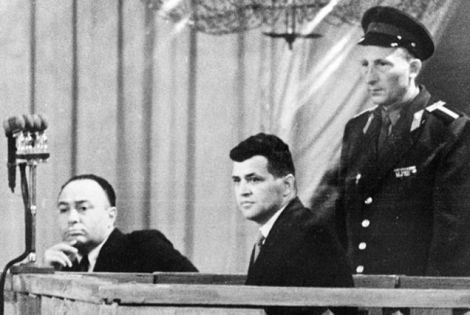
At first, the US denied that Powers was on a spy mission, and the unmarked U-2 was said to be an errant weather plane that had accidentally flown off course. As part of the cover up, NASA released a detailed account to the media of how one of its research planes had flown off course, and other U-2s were hastily painted with NASA markings to lend credibility to the ruse. But the Soviets were not fooled, and the incident dealt another blow to already-brittle US-Soviet relations. Despite American attempts at obfuscation, the Eisenhower administration was forced to admit the true nature of the flight, and Powers pled guilty at what was essentially a propaganda show trial. He was convicted of espionage and received a sentence of ten years in prison, including seven years of hard labor. Ultimately, Powers served only 21 months of his sentence and, on February 10, 1962, he was exchanged for KGB spy Rudolf Abel, who had been convicted for espionage in what was known as the Hollow Nickel Case.
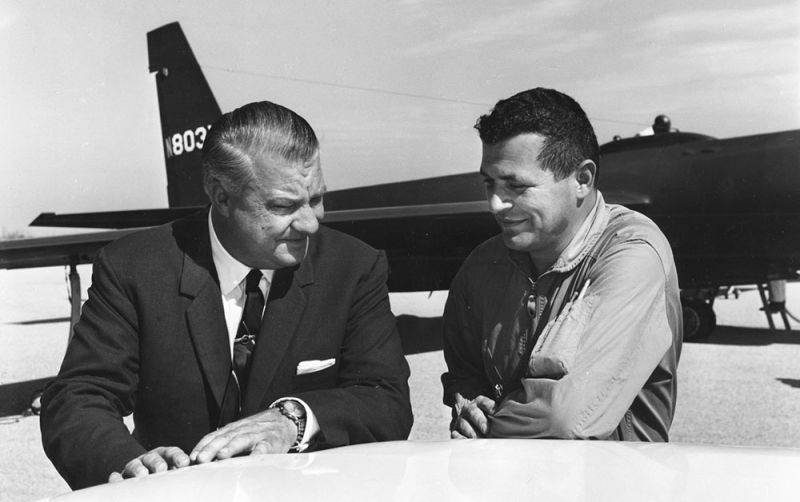
Following the incident, the US halted flights over the Soviet Union and accelerated its work on satellite reconnaissance. But the true legacy of the Powers incident was the CIA’s Oxcart program and the development of the Lockheed A-12 and Lockheed SR-71 Blackbird, aircraft whose combination of extreme altitude and Mach 3 speed made them capable of flying over enemy territory with complete impunity. Powers returned to the US and worked as a test pilot for Lockheed, though he remained on the CIA payroll. After leaving Lockheed, Powers worked as a helicopter pilot for a Los Angeles television station, and died in 1977 when his Bell 206 JetRanger ran out of fuel and crashed while covering a news a story.
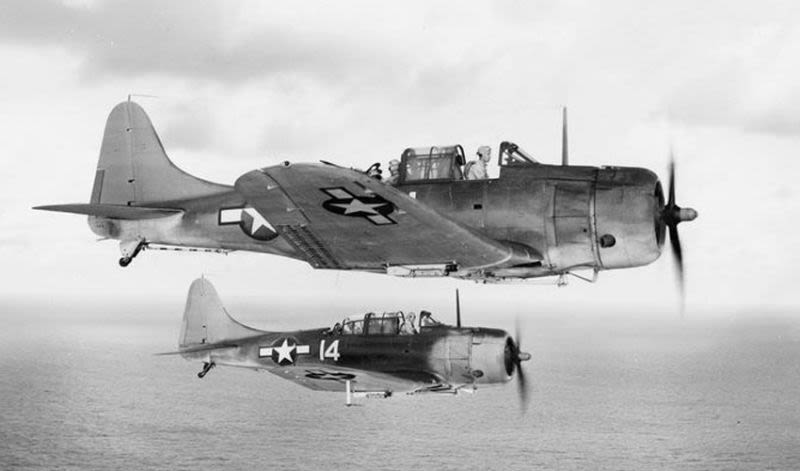
May 1, 1940 – The first flight of the Douglas SBD Dauntless. In the summer of 1921, US Army Air Service Brig. Gen. William “Billy” Mitchell carried out a series of tests to demonstrate his belief that air power alone could destroy ships at sea. Flying lumbering Martin NBS-1 bombers, with Royal Aircraft Factory S.E.5 fighters acting as dive bombers, Mitchell’s unit was successful in sinking the captured German battleship SMS Ostfriesland, but the results were controversial. Though the battleship sank, no direct hits were made by the large level bombers, and the Ostfriesland and other target ships were all lying at anchor and making no attempts to defend themselves. Nevertheless, Mitchell’s experiment proved the potential of air power against sea power, and it was the dedicated dive bomber that turned the tide of battle in the Pacific during WWII.
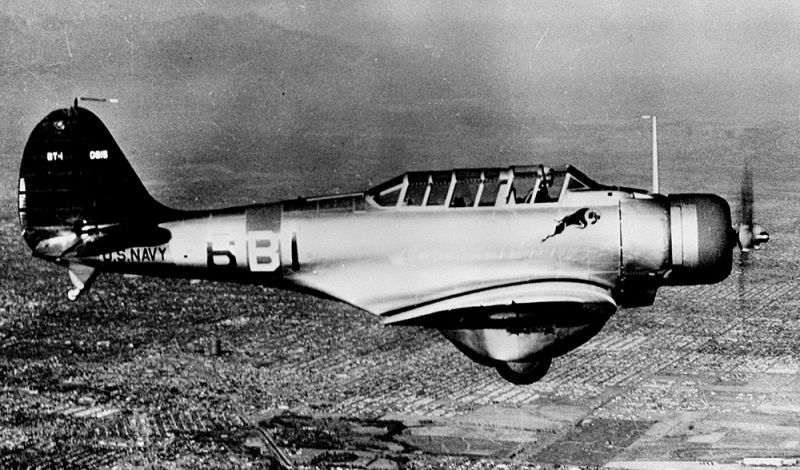
The Douglas SBD Dauntless traces its lineage back to the Northrop BT, a two-seat, single-engine dive bomber developed for the US Navy that first flew in 1935. Diving headlong at a target is a dangerous business, and an innovative feature of the BT was its perforated spilt flaps which helped eliminate tail buffeting during dives. These innovative flaps became a trademark of the later Dauntless. When Northrop was taken over by Douglas Aircraft Company in 1937, work on Northrop projects continued. Development of the Dauntless was taken over by a team led by Ed Heinemann, and the SBD (Scout Bomber Douglas) became the first in a long list of great warplanes that Heinemann helped to develop.
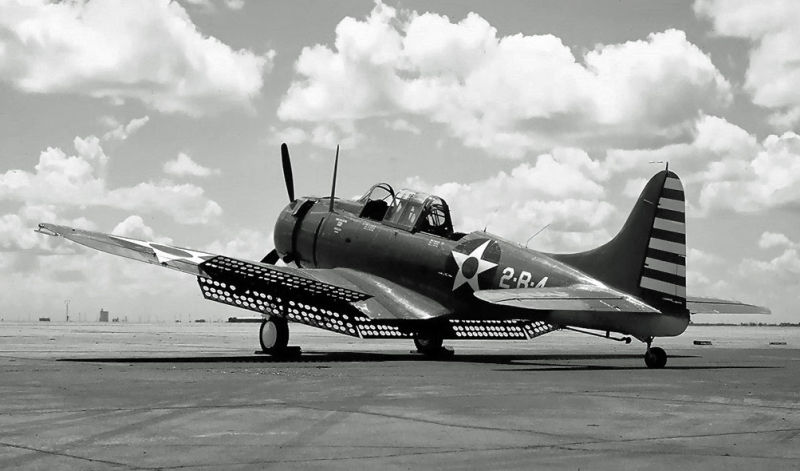
The first production models of the Dauntless were the SBD-1, which went into service with the US Navy, and the SBD-2, which served with the US Marine Corps. Both were powered by a 1,000 hp Wright Cyclone engine, and differed only in that the Marine Corps version had an increased fuel capacity and different armament. Development progressed to the SBD-3 in early 1941 with the addition of more armor plating to protect the crew, increased firepower from four machine guns, and self-sealing fuel tanks. But it was the SBD-5 that became the mainstay of the US Navy in the early years of the war. The most marked change in the SBD-5 was the inclusion of a more powerful Wright R-1820 Cyclone engine, the same engine that powered the Boeing B-17 Flying Fortress. The R-1820 boosted the SBD’s power up to 1,200 hp and gave it a top speed of 255 mph, though still 100 mph slower than the Japanese A6M Zero. In addition to its two rearward-firing .30 caliber defensive machine guns, the SBD-5 also featured two forward-firing .50 caliber machine guns which proved quite effective against more lightly built Japanese fighters.
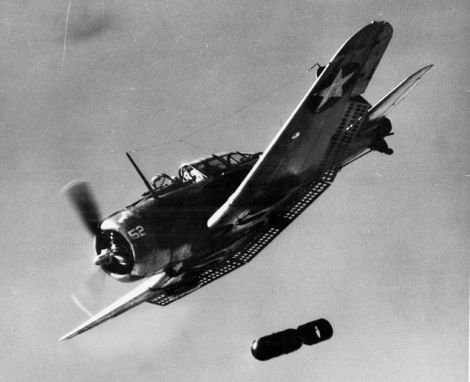
Following the Japanese attack on Pearl Harbor on December 7, 1941, the Dauntless went directly into battle, attacking Japanese positions throughout the Pacific Theater. The first significant contribution made by the Dauntless and her crews was in the Battle of the Coral Sea on May 4-8, 1942, when SBDs flying from the carriers Yorktown and Lexington sank the Japanese light carrier Shōhō and damaged the fleet carrier Zuikaku, which had taken part in the Pearl Harbor attack. The Battle of the Coral Sea was the first naval battle in history fought entirely by air, with no surface ships of the opposing navies ever sighting each other. While a tactical victory for the Japanese, the battle slowed Japanese expansion north of Australia, and set the stage for the pivotal Battle of Midway a month later, when four squadrons of SBDs flying from the American carriers Yorktown, Hornet and Enterprise sank the Japanese fleet carriers Akagi, Kaga, Sōryū and Hiryū, all of which had taken part in the attack on Pearl Harbor. The Americans lost one carrier, but the balance of power in the Pacific, and the initiative, shifted decisively to the Americans.
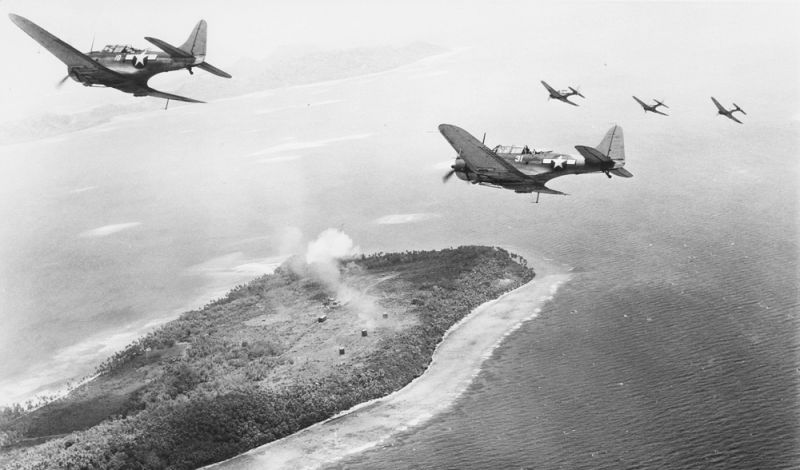
Though the Dauntless was meant to be replaced by the more powerful Curtiss SB2C Helldiver, the SBD soldiered on, and fought effectively throughout the Pacific War against both Japanese shipping and ground targets. The US Army evaluated a land-based version called the A-24 Banshee that was identical save for the removal of the tail hook and the inclusion of an inflated tail wheel, but it was not nearly as successful as the Dauntless. When production of the SBD and A-24 finished in 1944, nearly 6,000 aircraft had been built. Despite their exemplary service, the Dauntless had become obsolete, and they were quickly retired at the end of the war. Today, a number of aircraft are on display or undergoing restoration, while another six examples remain airworthy.

Short Takeoff

May 1, 1912 – The first flight of the Avro Type F. Though only one was ever built, the Type F is notable as the world’s first aircraft to feature an enclosed cabin as part of the design. The diminutive aircraft had room for just one pilot, who entered through an aluminum sheet metal trapdoor in the top of the fuselage. The Type F also had circular holes in the side windows so the pilot could stick his head out in case the windscreen became fouled by oil. The wire-braced monoplane made a number of test flights, but was eventually damaged beyond repair four months after its maiden fight. It’s Viale 35 hp radial engine is on display at the Science Museum in London, and its rudder belongs to the Royal Aero Club.
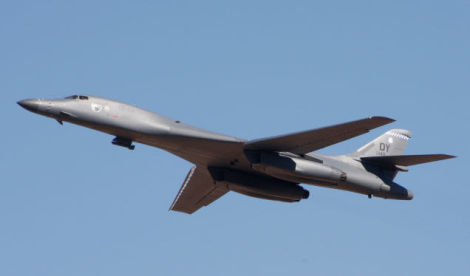
May 2, 1998 – The 100th and final Rockwell B-1B Lancer is delivered. The Rockwell B-1 was originally envisioned as a Mach 2, long-range nuclear bomber to replace the Boeing B-52 Stratofortress. The B-1A was canceled in 1977 by the Carter administration, but was resurrected during the Reagan administration as the B-1B, and its mission was changed to low-level bombing with conventional armament. Despite the recent emphasis on stealth technology, the B-1B has become a mainstay of the US Air Force, serving in all US conflicts since Operation Desert Fox in 1998. Despite recent upgrades, the “Bone” is will start to be phased out in 2015, and will be fully retired by 2036. It is likely, though, that the B-52, the aircraft the Lancer was meant to replace, will still be in service.
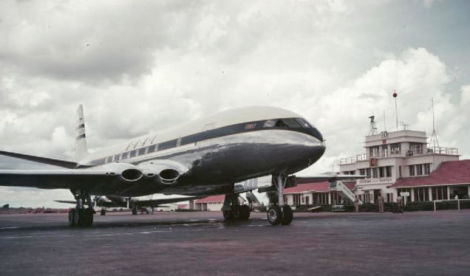
May 2, 1952 – The world’s first regularly scheduled jet passenger flights begin. The age of passenger flight took off in the 1930s, the so-called Golden Age of aviation, but the 1950s marked the transition from piston-powered to jet-powered airliners. The de Havilland Comet, with its four de Havilland Ghost turbojets, took its maiden flight on July 27, 1949, and the first production airliner, registered G-ALYP, carried fare-paying passengers for the first time on a flight from London to Johannesburg. In their first year of service, Comets carried 30,000 passengers, but soon major aircraft manufacturers such as Boeing, Convair and Douglas in the US, and later Airbus in Europe, joined the jet airliner business. Today nearly 37 million flights a year take place the world over, transporting more than three billion passengers.

May 3, 2007 – The death of American astronaut Walter Marty “Wally” Schirra. Schirra was born on March 12, 1923 in Hackensack, New Jersey, graduated from the US Naval Academy, and became a Naval Aviator in 1948. Schirra served in Korea, and later as a test pilot, before becoming a member of the Mercury Seven, America’s first group of astronauts, and flew the Mercury-Atlas 8 mission in 1962 which orbited the Earth six times. In 1965, Schirra joined astronaut Thomas Stafford in the flight of Gemini 6A and maneuvered his spacecraft to within one foot of Gemini 7, completing the first rendezvous in space between two manned spacecraft. In 1968, Schirra commanded Apollo 7, the first manned launch of the Apllo program. The Apollo flight made Schirra the first man to go to space three times, and the only astronaut to have flown in all three American manned space programs.
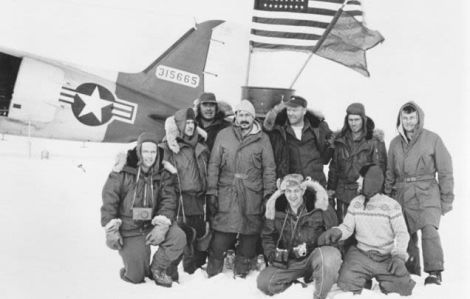
May 3, 1952 – The first American aircraft lands at the North Pole. US Air Force pilots Lt. Col. William P. Benedict and Lt. Col. Joseph Fletcher beat the US Navy to the North Pole while flying a Douglas C-47 Skytrain equipped with landing skis. The landing was the team’s second attempt during what was dubbed Operation Oil Drum, and Fletcher became the first person to undisputedly stand at the exact geographic North Pole. On the flight along with Flecther and Benedict was scientist Dr. Albert Crary, who would travel to the South Pole in 1961 and become the first person to stand at both poles.
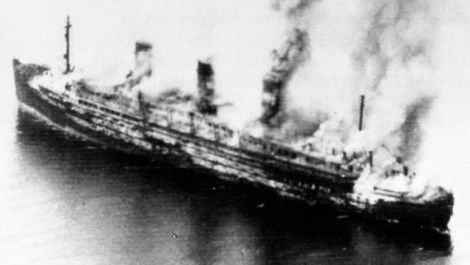
May 3, 1945 – British aircraft sink German ships carrying concentration camp prisoners. Three days after the death of Adolf Hitler and just one day before Germany’s unconditional surrender ending WWII in Europe, the SS Cap Arcona and SS Thielbek left Baltic Sea ports loaded with nearly 8,000 prisoners who had been transferred from German prison camps. Neither of the ships was marked as a hospital ship, though a third ship, SS Deutschland, had one white funnel with a red cross on it from its days as a hospital ship. Despite warnings from the International Red Cross about the true nature of the ships’ cargo, British naval commanders believed that the ships carried members of the Nazi Schutzstaffel (SS) fleeing to Norway, and attacked all three ships. Thielbek sank in roughly 20 minutes, while Cap Arcona burned before sinking, and British warplanes machine-gunned the survivors floating in the water. In all, 7,800 former prisoners died in the attack, marking one of the heaviest losses of life in naval history.
Connecting Flights
If you enjoy these Aviation History posts, please let me know in the comments. And if you missed any of the past articles, you can find them all at Planelopnik History. You can also find more stories about aviation, aviators and airplane oddities at Wingspan.